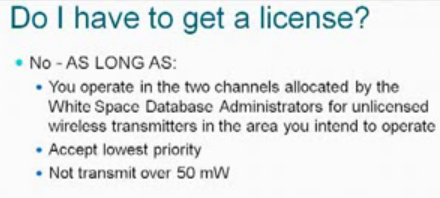This post is still evolving. The newest info at the top, the links to apply for an FCC Low Power license is at the bottom.
7-13-2020
|
|
5-19-19 The repack is in full swing and there is a lot of chatter on the forums about what can be done. The best resource I have found so far for learning about what spectrum will be available after the repack is finished comes as a spreadsheet available from Lectrosonics.
5-30-17 Editor’s note. The auction is complete. Houston can look forward to a severe reduction in available spectrum according to the chart below

Radio Active Designs has made a nice interactive map of major cities whitespace.
2-1-17 Editor’s Note. This is an old post. Most of the information is still correct, but now the spectrum auction is over and we know where the new legal cutoff frequency is. Check out this Lectrosonics page for the details. The chart below shows the UHF spectrum of the near future.
The older post begins here. In the comment section at the bottom are resources for getting an FCC license.
__________________________________________________________
First, as of this writing, it is still not terribly clear what EXACT frequencies are to be affected and what the potentially interfering devices will be like. There is a lot of confusion and it is difficult to search on the web for relevant, timely discussions about what exactly is about to happen, because there is a lot more interest in the money making potential of the new spectrum then the costs to wireless microphone users. Users of wireless ifb and wireless intercom are also equally effected.
Thanks to Glen Trew of Trew Audio for allowing me to repost the web seminars he organized. I am basically stripping out some of the key points from the seminars in an effort to provide a place to begin self education. I do not represent any of the information as 100% correct, nor do I specifically endorse any particular equipment or vendors.
The problem began recently with the passage of:
The Middle Class Tax Relief and Job Creation Act of 2012
Title VI – Public Safety Communications and Electromagnetic Spectrum Auctions
Subtitle D – Spectrum Auction Authority
Sec. 6403. Special requirements for incentive auction of broadcast TV spectrum
A decent summary of the passage is here. Note there is no mention of it’s effect on wireless mics.
The FCC itself was surprised by the legislation and much of the confusion is around the way that the law must be implemented, which is still to be determined. Basically the result is that anything above 600 MHz is likely to not be available in the duty cycle of wireless equipment you might buy now. Previously, the cutoff was 700 MHz at the time of the digital TV transition.
Here is a link to Bill Ruck’s professional services and a do it yourself method.
Do you have to get a license? No – AS LONG AS:
1. You operate in the two channels allocated by the White Space Database Administrators for unlicensed wireless transmitters in the area you intend to operate
2. Accept lowest priority (Anybody with a license can tell you to move out of their frequencies.)
3. You do not transmit over 50 mW
All three conditions must be satisfied.
Here are two links that can help you find the whitespaces you can use:
http://whitespaces.spectrumbridge.com/whitespaces/home.aspx
https://prism.telcordia.com/tvws/main/home/contour_vis.shtml
It is interesting to note that in my area, Houston, TX , one of the whitespace TV channels (40) is above 600 MHz. And the seminar indicates that some towns (L.A.) may have different whitespace channels for different areas of town or none at all!
Why should you get an FCC license?
Licensing allows the holder to use mics of higher power then 50mW up to 250 mW. A person licensed to use frequencies other then the two official whitespace TV channels, may do so.
Some day soon, you will want to clear the channels of your mics of all these TBD wi-fi devices that might be able to mess up your wireless mic signal. Being a licensed operator will allow you to tell the databases with which these future wi-fi devices must check in that they must go somewhere else than your frequencies to operate. This will be a good thing for conferences and places where lots of people will gather and bring their personal wi-fi.
Ironically only producers of television and motion pictures are currently licensees. Churches, radio producers, theaters, convention centers, and sports stadiums are not licenseable to operate portable wireless mics. This is unless they are producing television or film. And web streaming by itself does not count.
If you are ‘of standing’ or hold a license, and you have filed on the database, you can tell other operators to clear your frequencies.
Being ‘of standing’ means that the FCC must actually file and take notice of any concerns you address to them. From a political standpoint, this makes the most empowering argument. If we had all been licensed like we were supposed to, there might have been enough voices to fend off this problem.




One response to “Are My Wireless Mics Legal? What Frequencies for Mics Do I Buy? Why Get an FCC License For Wireless Mics?”
Here is a link to Bill Ruck’s professional assistance or a do it yourself method:
http://www.local695.com/fcc/how-to-get-a-license/